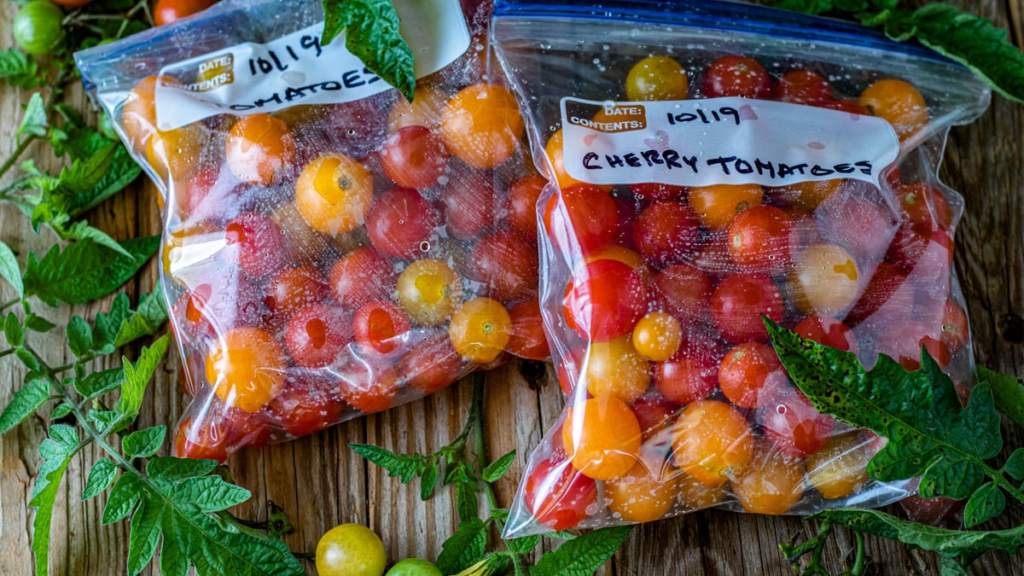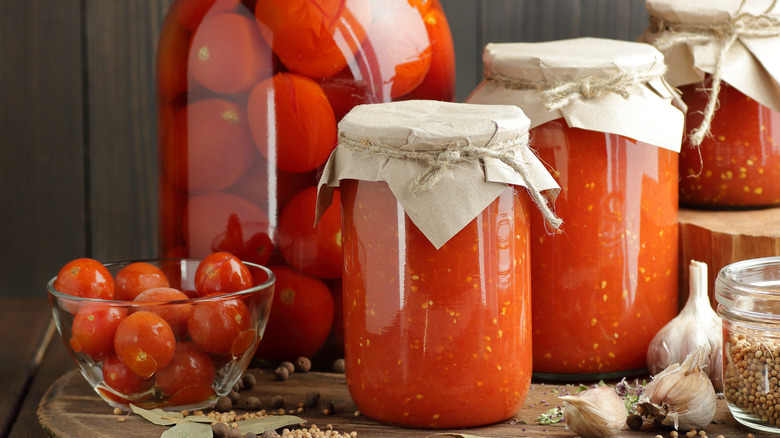Preserving tomatoes for later use is an excellent way to enjoy the flavors of summer all year round. Whether freezing, drying, or canning, each preservation method works best with specific types of tomatoes. The key to success lies in understanding how variations in flesh, juice, and gel content affect the preservation process. Below, we explore the best tomato varieties for each method.
Best Tomatoes for Freezing
Freezing is a simple and effective method for preserving tomatoes, especially for small varieties like cherry tomatoes. While these tiny fruits are packed with juice and seeds, which make them unsuitable for canning due to their tendency to yield a thin, bitter sauce, freezing locks in their fresh, fruity flavors. Before freezing, be sure to wash the tomatoes thoroughly. Once frozen, you can use them directly from the bag in soups, pasta dishes, or for roasting.
Additionally, certain tomato varieties, particularly those with partially hollow interiors, are great for stuffing and freezing. To prepare them, core the tomatoes, freeze them on a cookie sheet, and then transfer them to freezer bags once they’re frozen solid. This method ensures the tomatoes don’t stick together, making it easy to thaw, fill, and bake them for a delicious, summer-inspired dish in the winter months.

Best Tomatoes for Dehydrating
Dehydrating tomatoes is another popular preservation method, particularly for those who enjoy cooking with dried tomatoes. This process concentrates the flavors, making dried tomatoes a versatile addition to a variety of dishes such as soups, pasta, or paired with eggs. By drying tomatoes raw and with their skins on, you can also retain more nutrients compared to cooking methods like canning.
Heirloom tomatoes, especially juicy varieties, are excellent for drying because their rich flavors intensify during the drying process. Additionally, dehydrating yellow or orange tomatoes creates an exciting new flavor profile without the familiar red color. For example, dried yellow tomatoes add a unique twist to your cooking, offering a fresh and flavorful alternative to the standard red varieties.

Using a dehydrator is the easiest and most efficient way to dry tomatoes, ensuring crisp, long-lasting slices. Alternatively, you can dry tomato halves or quarters in a warm oven overnight, then freeze them once they’ve collapsed. Oven-dried tomatoes make a flavorful topping for pizzas, while thawed, half-dried tomatoes are perfect for adding to salads. This method is particularly useful for excess plum or saladette tomatoes.
Best Tomatoes for Canning
For canning, dense, paste-type tomatoes are the top choice. These varieties have thick flesh, few seeds, and minimal juice, making them ideal for processing into salsa, pasta sauces, or all-purpose tomato sauce. Paste tomatoes are also great for canning whole or diced tomatoes, which can be done quickly without the mess of using a sieve.
Varieties such as ‘Plum Regal’ and ‘Roma’ are known for their large, easy-to-peel fruits, making them perfect for canning. Even rounder varieties like ‘Heinz 1350’ and unique processing types like the deep yellow ‘Illini Gold’ work well for preserving. These types of tomatoes hold up well to heat and maintain a rich, flavorful texture when canned.

By growing just a few key varieties, such as five paste tomatoes, along with a mix of other shapes and colors, you can ensure a steady supply of preserved tomatoes throughout the year. With thousands of varieties to choose from, experimenting with new types each season is one of the joys of gardening.
Conclusion
Each preservation method—freezing, drying, and canning—works best with different tomato varieties. Understanding which types excel in each method ensures the best flavor and texture when you’re ready to enjoy your preserved harvest. Whether you’re freezing small cherry tomatoes, dehydrating heirlooms, or canning paste varieties, you’ll be able to savor the taste of summer long after the growing season has ended.
